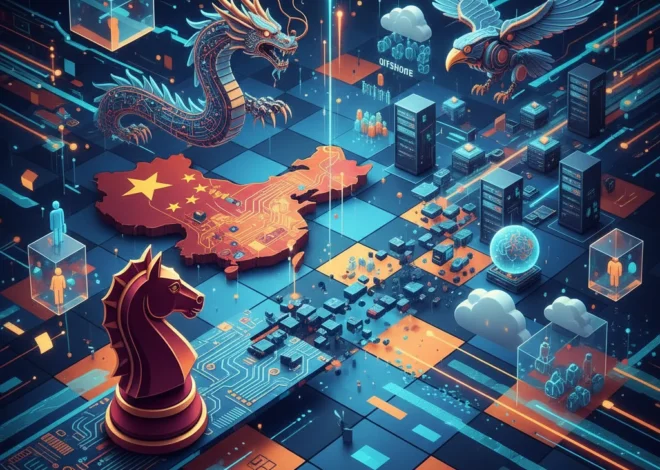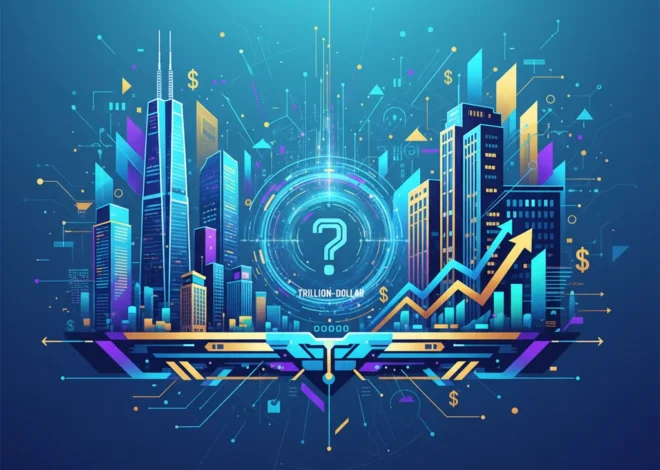
The Unseen Cost of AI: Why Your ChatGPT Prompt Is Sparking a Land War in Rural America
We live in an age of digital magic. With a few keystrokes, we can command artificial intelligence to write code, design stunning images, or even compose music. This revolution, powered by incredible leaps in machine learning and software, feels ethereal and weightless. It’s all just happening in the “cloud,” right?
But the cloud has a physical address. And right now, that address is increasingly in places like rural Georgia, where a clash is brewing between the colossal needs of Big Tech and the communities they’re moving in with. The seemingly infinite power of AI is running up against a very finite resource: land, electricity, and local goodwill.
The latest AI gold rush isn’t for silicon or talent; it’s for space to build massive, power-hungry data centers. And as these digital factories—some stretching for millions of square feet—begin to dot the landscape, a question emerges that will define the next decade of innovation: What is the real-world cost of our digital future, and who gets to decide where it’s built?
The New Hotspot: Why Georgia?
For years, Northern Virginia was the undisputed king of the data center world, earning the nickname “Data Center Alley.” But the insatiable demand for computing power, supercharged by the generative AI boom, has sent tech giants scrambling for new territory. And they’ve found a welcoming home in Georgia.
The state has rolled out the red carpet with attractive tax incentives, available land, and robust fiber-optic connectivity. This has triggered a tsunami of investment. In the Atlanta metropolitan area alone, data center capacity is projected to more than triple, with companies like Microsoft and Switch making massive bets on the region. Switch’s “Keep Campus” in Douglas County, for example, is planned to be one of the largest data center sites in the US, a sprawling complex of digital fortresses spanning several million square feet.
This isn’t just about storing your vacation photos anymore. These facilities are the engine rooms for the modern tech economy. They power everything from your favorite SaaS applications to the complex automation that runs global logistics. More importantly, they house the thousands of specialized GPUs (Graphics Processing Units) required to train and run the large language models (LLMs) behind tools like ChatGPT, Claude, and Midjourney.
Every time you ask an AI to perform a task, you’re sending a request to one of these server farms. The complexity of that request determines the computational load, but at scale, it creates a staggering, constant demand for power and cooling.
The Code Red for Social Media: Why Instagram's Australian Teen Ban is a Tech Earthquake
“Monstrosities”: The View from the Ground
For tech professionals and startups, this expansion is a sign of a healthy, growing ecosystem. But for some residents living next door, it’s a nightmare. The Financial Times article highlights a growing chorus of opposition from local communities who see these facilities not as temples of innovation, but as unwelcome industrial giants.
Local official Tonya Miller described the proposed data centers in her area as “monstrosities.” It’s a sentiment echoed by many. The primary complaints aren’t just about aesthetics; they’re about a fundamental change to the character and environment of their communities.
Key Community Concerns:
- Constant Noise: Data centers require massive cooling systems that run 24/7, producing a constant, low-frequency hum that can be a source of significant noise pollution for nearby homes.
- Resource Drain: These facilities are thirsty. They consume enormous amounts of electricity, straining local power grids, and often use vast quantities of water for their cooling systems, a major concern in areas prone to drought.
- Visual Blight: By design, data centers are often massive, windowless, fortress-like structures surrounded by high security fences. They can dominate a landscape without integrating into it.
- Limited Local Benefit: Despite the billions in investment, modern data centers are highly automated. They create a burst of construction jobs, but relatively few permanent, high-paying local jobs once operational. The tax revenue is often the main selling point, but communities are starting to question if it’s worth the trade-off.
This backlash has led several counties in the Atlanta area to consider or enact moratoriums on new data center development, a move that could send shockwaves through the tech industry’s expansion plans. It’s a classic conflict between economic development and quality of life, but one that’s been supercharged by the sheer scale and speed of the AI revolution.
We’re seeing the carbon footprint of code in real-time. This presents a massive opportunity for innovation. The next billion-dollar startup in the AI space might not be the one that builds the most powerful model, but the one that builds the most efficient one. Developers who master the art of lean programming and create algorithms that do more with less compute will be invaluable. Likewise, cloud providers who pioneer sustainable data center designs—using waste heat for local agriculture, integrating seamlessly with renewable energy, or creating modular, less intrusive facilities—will have a powerful competitive and ethical advantage. This is the moment where the abstract world of software has to get its hands dirty with the realities of energy, water, and community relations.
The Power Problem: AI’s Shocking Energy Appetite
To truly understand the tension, we need to talk about power. The core issue driving this conflict is the almost unbelievable amount of electricity that AI data centers consume. Training a single large AI model can consume as much electricity as hundreds of homes do in a year.
Georgia Power, the state’s largest utility, has found itself at the epicenter of this demand surge. The utility recently had to dramatically revise its energy forecasts, citing the explosive growth of data centers as the primary driver. According to their projections, the new demand from these facilities is a key reason they expect electricity sales to grow 17 times faster over the next decade than previously estimated.
Let’s put that into perspective with a look at the numbers.
| Time Period | Projected Growth (Megawatts) | Primary Driver |
|---|---|---|
| 2025 | +1,400 MW | Data Centers & Industrial Growth |
| 2030 | +6,600 MW | Overwhelmingly Data Centers |
This projected 6,600 MW increase by 2030 is staggering—it’s equivalent to the output of several large nuclear power plants. This has massive implications:
- Grid Stability: Can the existing infrastructure handle such a rapid and concentrated increase in demand? This raises serious questions about grid reliability and even cybersecurity, as a strained grid can be more vulnerable.
- Climate Goals: To meet this demand, Georgia Power has proposed building new natural gas turbines. This runs directly counter to national and global efforts to transition away from fossil fuels, potentially erasing gains made in renewable energy adoption.
- Cost for Consumers: Building new power plants and upgrading the grid is expensive. Those costs are inevitably passed on to all customers—both residential and business—in the form of higher electricity bills.
Nvidia's AI Juggernaut: Is This a Bubble or the New Industrial Revolution?
Finding a Path Forward: Can Tech and Communities Coexist?
The situation in Georgia is a preview of a conflict that will likely play out across the globe. As the AI arms race continues, the demand for data centers will only grow. So, how do we build the infrastructure for the future without sacrificing the present?
There are no easy answers, but several paths are emerging, combining technological innovation, smarter policy, and better corporate citizenship.
Smarter Design and Location
The industry must move beyond the “big box” model. Innovations in liquid cooling can drastically reduce water and energy usage compared to traditional air cooling. Forward-thinking projects are exploring ways to capture waste heat from data centers and use it to heat nearby homes, greenhouses, or community buildings. Furthermore, building data centers in naturally colder climates can reduce cooling costs, and co-locating them with large-scale renewable energy projects (like solar or wind farms) can ensure they run on clean power.
Efficiency at the Code Level
The ultimate solution lies in making AI itself less power-hungry. This is a challenge for everyone involved in software development and programming. It means a renewed focus on algorithmic efficiency, developing new techniques for model training that require less data and fewer computational cycles, and optimizing inference processes. The race for model size and capability needs to be balanced with a race for model efficiency.
Policy and Community Engagement
Tech companies can no longer expect to just show up and build. They need to engage with communities early and transparently, co-designing projects that offer tangible benefits beyond a few jobs. This could mean investing in local infrastructure, funding STEM education programs, or contributing to green spaces. On the policy side, local governments need to move from reactive moratoriums to proactive zoning. They can create specific industrial zones for data centers, establish noise and environmental standards, and negotiate community benefit agreements that ensure the locality shares in the prosperity.
Don't Tax Innovation: Why the Future of Electric Vehicles is a Software-Defined Problem
The Future is Physical
The story unfolding in Georgia is a powerful reminder that the cloud is not an abstract concept; it is a sprawling, physical, and resource-intensive reality. For developers, entrepreneurs, and tech leaders, it’s a wake-up call. The choices we make—the cloud provider we use, the efficiency of the code we write, the architecture of our SaaS platforms—have a direct and growing impact on the physical world.
The next great wave of innovation won’t just be about creating more powerful artificial intelligence. It will be about building a sustainable foundation for that intelligence. The future of AI depends not just on brilliant software, but on a thoughtful, responsible, and collaborative approach to its very real, very large, and very power-hungry physical footprint.


